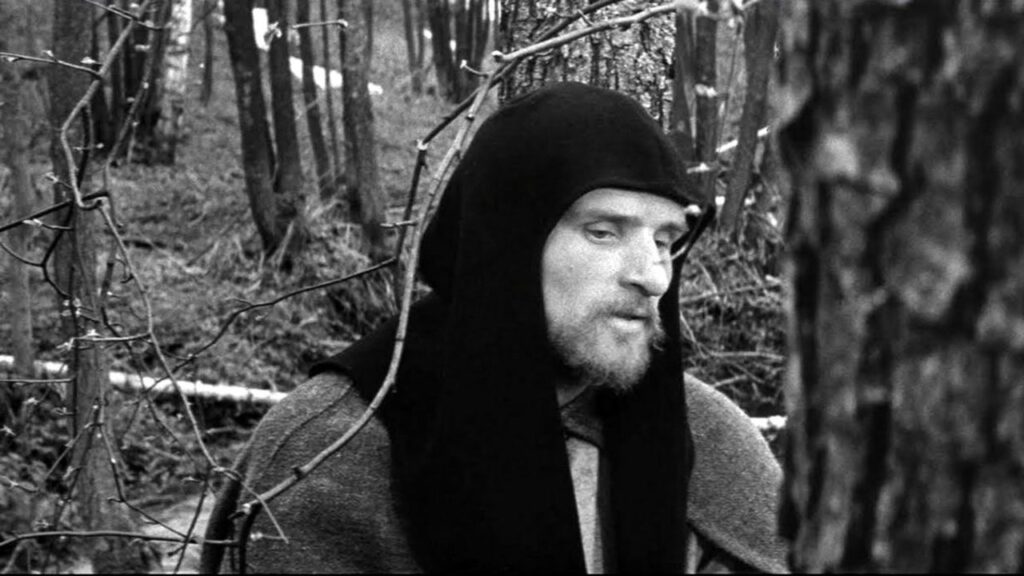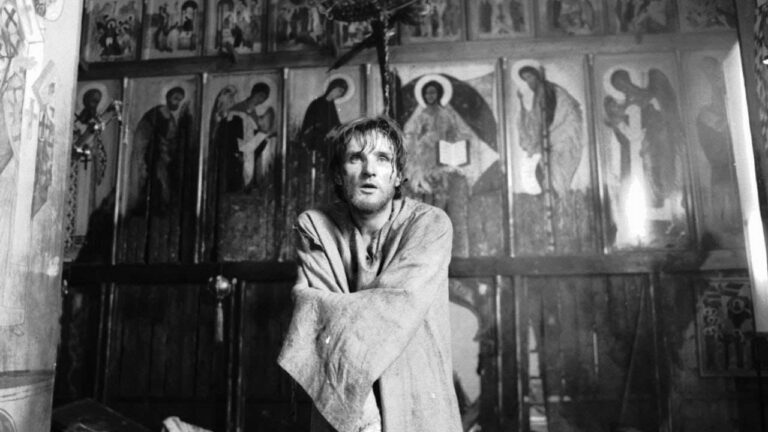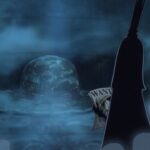‘Andrei Rublev,’ directed by Andrei Tarkovsky in 1966, is a historical film that follows the life of the 15th-century Russian icon painter Andrei Rublev. The film is set during a period of war, political unrest, and spiritual uncertainty in medieval Russia. Rather than being a conventional biography, it explores how an artist functions in a society marked by violence and doubt. Tarkovsky structures the film in separate episodes that trace Rublev’s gradual loss and recovery of faith in both humanity and his work.
The film begins with a short prologue in which a man attempts to fly using a handmade balloon. Villagers chase him as he rises for a few moments before falling. This scene, though disconnected from the main story, sets up the idea of human aspiration and failure. It reflects the theme that every creative act involves risk and misunderstanding.
History, Suffering, and the Artist’s Conscience

The narrative turns to Rublev and his fellow monks Kirill and Daniil as they travel through the countryside in search of work. On the road, they encounter a jester entertaining peasants with mocking songs about the nobles and clergy. Soldiers arrest the jester, and the monks continue in silence. This moment establishes the world of the film, where speech and art can lead to punishment, and where Rublev’s instinct is to remain passive rather than act.
Later, Rublev meets Theophanes the Greek, an older and more established painter who invites him to assist in decorating a cathedral. Their conversations expose the difference between them. Theophanes is cynical and sees humanity as corrupt, while Rublev believes in compassion and the possibility of spiritual truth through art. This dialogue marks Rublev’s early belief that painting can serve a divine purpose, though he begins to see how fragile that belief is in a harsh world.
The next major scene shows Rublev taking shelter during a storm and witnessing villagers performing a Passion play. The event, meant to express devotion, is interrupted by soldiers who scatter the crowd. The intrusion of violence into an act of faith shows how religion and cruelty coexist in the same social space. Rublev’s confidence in the value of art begins to weaken.
The attack on the city of Vladimir forms the turning point of the film. Tatar forces, aided by Russian traitors, burn and destroy the city. Churches are looted, and citizens are murdered. Tarkovsky films the raid in extended takes that show the collapse of order and belief. During the chaos, Rublev kills a man while trying to protect a woman, breaking his monastic vow. This act pushes him into silence and despair. He stops painting altogether, convinced that his art cannot exist in such a violent world.
The Struggle and Resurrection of Andrei Rublev

When he is asked to paint a fresco of the Last Judgment, Rublev refuses. He cannot bring himself to depict eternal punishment when he has seen enough suffering on earth. His silence becomes both protest and self-punishment. The film then moves forward several years to a period of partial recovery for Russia. A young boy named Boriska claims to know the secret of casting church bells, knowledge that supposedly died with his father. He is given a commission and leads the project under immense pressure.
Rublev, still mute, watches the boy’s struggle. When the bell finally rings successfully, Boriska breaks down and confesses that he never knew the secret at all. Rublev comforts him and finally speaks, telling the boy that he will return to painting and that the boy should continue casting bells. Through this exchange, Rublev rediscovers faith not through doctrine but through human resilience and shared labor.
In the epilogue, the black and white photography shifts to color as Tarkovsky shows the real icons attributed to Rublev. After so much destruction, the sight of the paintings suggests endurance rather than triumph. Art survives even when the artist doubts its meaning. The film’s final message is that creativity persists through suffering and that faith in the act of creation itself can outlast political and personal collapse. Tarkovsky’s careful rhythm, attention to natural detail, and refusal to simplify emotion make Andrei Rublev a study of how art, silence, and belief interact under pressure. It remains one of the most rigorous examinations of the role of the artist in history and the conditions under which beauty continues to exist.




